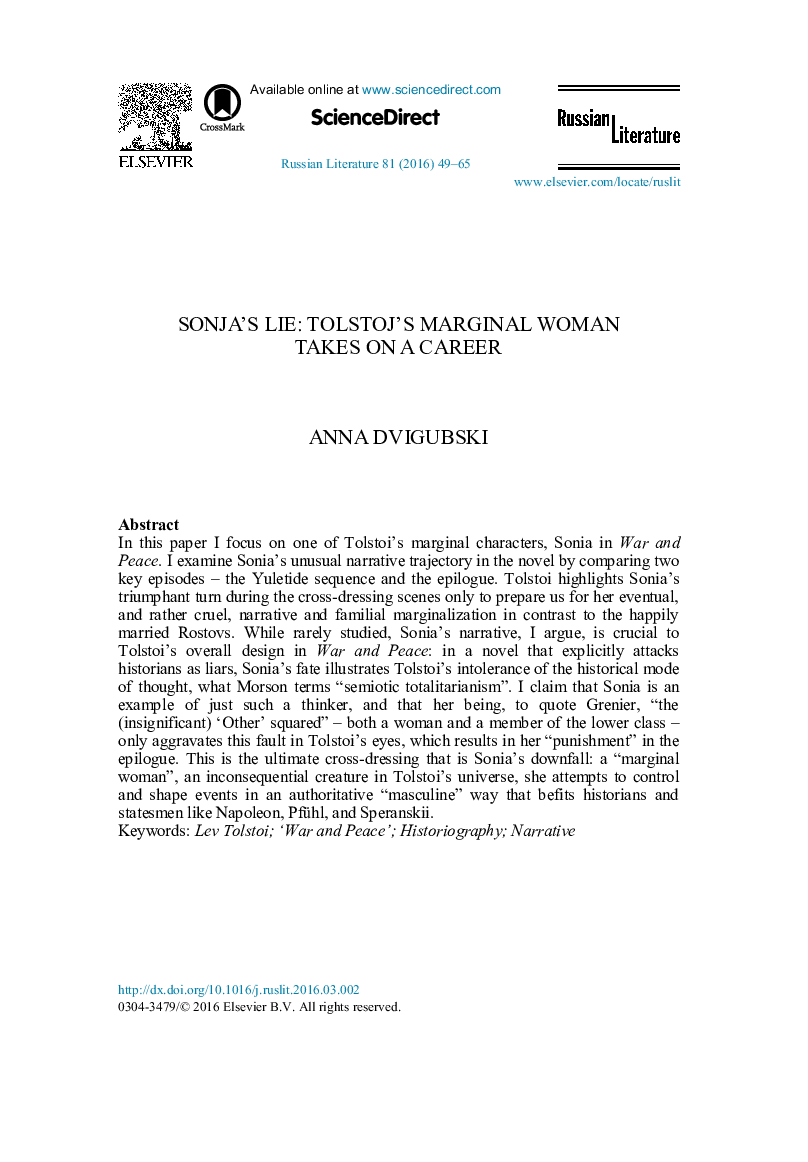| Article ID | Journal | Published Year | Pages | File Type |
|---|---|---|---|---|
| 1103755 | Russian Literature | 2016 | 17 Pages |
In this paper I focus on one of Tolstoi's marginal characters, Sonia in War and Peace. I examine Sonia's unusual narrative trajectory in the novel by comparing two key episodes – the Yuletide sequence and the epilogue. Tolstoi highlights Sonia's triumphant turn during the cross-dressing scenes only to prepare us for her eventual, and rather cruel, narrative and familial marginalization in contrast to the happily married Rostovs. While rarely studied, Sonia's narrative, I argue, is crucial to Tolstoi's overall design in War and Peace: in a novel that explicitly attacks historians as liars, Sonia's fate illustrates Tolstoi's intolerance of the historical mode of thought, what Morson terms “semiotic totalitarianism”. I claim that Sonia is an example of just such a thinker, and that her being, to quote Grenier, “the (insignificant) ‘Other’ squared” – both a woman and a member of the lower class – only aggravates this fault in Tolstoi's eyes, which results in her “punishment” in the epilogue. This is the ultimate cross-dressing that is Sonia's downfall: a “marginal woman”, an inconsequential creature in Tolstoi's universe, she attempts to control and shape events in an authoritative “masculine” way that befits historians and statesmen like Napoleon, Pfühl, and Speranskii.
